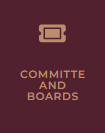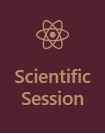Relapse Correction with Removable Orthodontic
DOI:
https://doi.org/10.18196/imunity.v1i1.24Keywords:
active plate, orthodontic, relapseAbstract
Relapse is when the teeth return to the position before orthodontic treatment. The small gaps between teeth often occur due to relapse conditions. A removable appliance is an orthodontic appliance that the patient can remove and insert themselves. This aims to report a relapse case treated using removable orthodontics. The case, A 26-year-old female patient complained of upper front teeth being gapped and lower front teeth being crowded. Previous dental history showed that the teeth had been treated with a fixed orthodontic appliance one year ago with premolar extraction. The patient did not use a retainer. The removable orthodontic appliance used was an active plate that retracted the maxillary anterior teeth using a labial bow. Orthodontic relapse can occur due to incomplete remodelling. Retraction using a labial bow can close the anterior teeth palatally. Active plates can be used as an alternative treatment in mild cases of relapse after fixed orthodontic treatment
References
Littlewood, S. J., Tait, A. G., Mandall, N. A., & Lewis, D. H. (2001). The role of removable appliances in contemporary orthodontics. British dental journal, 191(6), 304-310.
Littlewood, S., Kandasamy, S., Huang, G. (2017). Retention and relapse in clinical practice. Australian Dental Association. 62 (1), 51–57. https://doi.org/10.1111/adj.12475
Kilic, N., Oktay, H., Ersoz, M. (2011). Effects of force magnitude on relapse: An experimental study in rabbits. American Journal of Orthodontics and Dentofacial Orthopedics. 140, 44–50. https://doi.org/10.1016/j.ajodo.2009.12.035
Kapila, S., & King, G. J. (2015). Biological Mechanisms in Orthodontic Tooth Movement. In R. Nanda, Esthetics and Biomechanics in Orthodontics (pp. 90-105). Missouri: Elsevier Saunder
Schneider, D.A., Smith, S.M., Campbell, C., Hayami, T., Kapila, S., Hatch, N.E. (2015). Locally limited inhibition of bone resorption and orthodontic relapse by recombinant osteoprotegerin protein. Orthodontics and Craniofacial Research. 18, 187– 195. https://doi.org/10.1111/ocr.12086
Hussain, U., Ayub, A., & Farhan, M. (2013). Etiology and treatment of midline diastema: A review of literature. Pakistan orthodontic journal,5(1),27-33. https://poj.org.pk/index.php/poj/article/view/76
Singh, G., (Ed.). (2015). Textbook of orthodontics. JP Medical Ltd.
Proffit, W. R., dkk. (2018). Contemporary Orthodontics (6th ed). St. Louis: Elsevier/Mosby; p. 1-11, 247-58.
Cobourne, M., dan DiBiase, A., (2016). Handbook of Orthodontics (2nd ed). Edinburgh: Mosby Elsevier; p. 1-16
Schott, T. C., Meyer-Gutknecht, H., Mayer, N., Weber, J., & Weimer, K. (2017). A comparison between indirect and objective wear-time assessment of removable orthodontic appliances. European Journal of Orthodontics, 39(2),170-175.http://doi.org/10.1093/ejo/cjw026
Dolci, G.S., Portela, L.V., Onofre de Souza, D., Medeiros Fossati, A.C., (2017). Atorvastatin-induced osteoclast inhibition reduces orthodontic relapse. American Journal of Orthodontics and Dentofacial Orthopedics. 151,528–538. https://doi.org/10.1016/j.ajodo.2016.08.026
Ardhana, W., (2011). Materi kuliah orthodonsia 1 alat ortodontik lepasan. Yogyakarta: Fakultas Kedokteran Gigi Universitas Gadjah Mada. Pp. 4-19.
Philips, R. W. (2010). Science of Dental Materials. Philadelphia, USA: Med Pub; p. 365
Mizrahi, E. (2015). Orthodontic pearls. 2nd ed. London: Taylor & Francis Group, LLC. Pp. 313-4.
Wardana, P. N., Saputra, S., Putri, C. A. A., & Khairunnisa, S. H. (2023). Removable Orthodontic Treatment for Managing Relapse Due to Eruption of Third Molars: A Case Report. Insisiva Dental Journal: Majalah Kedokteran Gigi Insisiva, 12(2), 94-101. https://doi.org/10.18196/di.v12i2.18894







